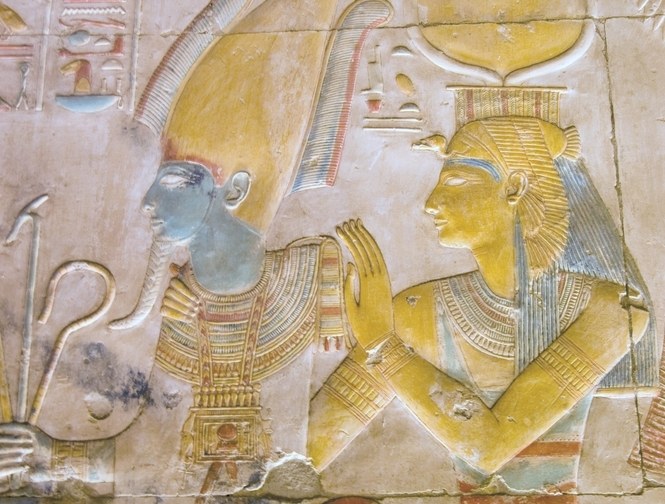Dismemberment has been a cruel form of capital punishment throughout Asian and European history, used to inflict not only physical suffering but also deep psychological trauma on both the victim and the executioner. While some cultures viewed dismemberment as a way to achieve justice, it also served as a brutal reminder of the power imbalance between the state and the individual.
 |
| Isis and Osiris |
The ugly practice came to North American shores, legitimized under the belief in manifest destiny (a theme given a new twist by Donald Trump). Theodore Roosevelt himself condoned the dismemberment of Native American Indian women and children in Colorado as a "righteous and beneficial" deed.
Roosevelt published a book in which he wrote that “the so-called Chivington or Sandy [sic] Creek Massacre, in spite of certain most objectionable details, was on the whole as righteous and beneficial a deed as ever took place on the frontier.” ¹
The theme of dismemberment occurs throughout comparative mythology. In the Hindu Artharva Veda the world is created from the sacrifice and dismemberment of the "cosmic man" (Skt. purusa). This has been interpreted as a universal self that we ultimately return to, past the fragmented splinters of false and deceptive personalities and personas.
In Egyptian mythology, Osiris is dismembered by the demon Set. His sister-wife Isis, with the help of Nephthys and Anubis, restores him fully with only his nose to work on, a tale arguably prefiguring the 21C realities of cloning.
Mythic dismemberment usually fits, either closely or indirectly, within the larger mythological cycle of death and resurrection because dismembered characters in myth often come back in some kind of new, transformed state.
In Greek mythology, the god Dionysus is dismembered by the Titans. In Japanese mythology, Izanagi dismembers Kagutsuchi in revenge for the death of his lover Izanami. In Aztec mythology, the god Huitzilopochtli dismembers his sister Coyolxauhqui for trying to kill their mother, Coatlicue. He tossed his sister's head into the sky, where it became the moon.
Mythic dismemberment usually fits, either closely or indirectly, within the larger mythological cycle of death and resurrection because dismembered characters in myth often come back in some kind of new, transformed state.
Dismemberment motifs also crop up in B-movies, video games, anime, and rock music. And in literature, Dante's Divine Comedy has recurring cycles of dismemberment and healing as a form of punishment for falsifiers.
While mythological narratives often depict dismemberment as a precursor to transformation, such as the rebirth of Osiris or the creation of the world in Hindu cosmology, the real-world practice of dismemberment had profoundly devastating consequences. It inflicted not only physical suffering but also deep psychological trauma on both the victim and the perpetrator.
While mythological narratives often depict dismemberment as a precursor to transformation, such as the rebirth of Osiris or the creation of the world in Hindu cosmology, the real-world practice of dismemberment had profoundly devastating consequences. It inflicted not only physical suffering but also deep psychological trauma on both the victim and the perpetrator.
Dismemberment as a form of capital punishment, while thankfully less common today, raises crucial ethical questions about the nature of justice, the sanctity of the human body, and the potential for violence to perpetuate further suffering.

Comments